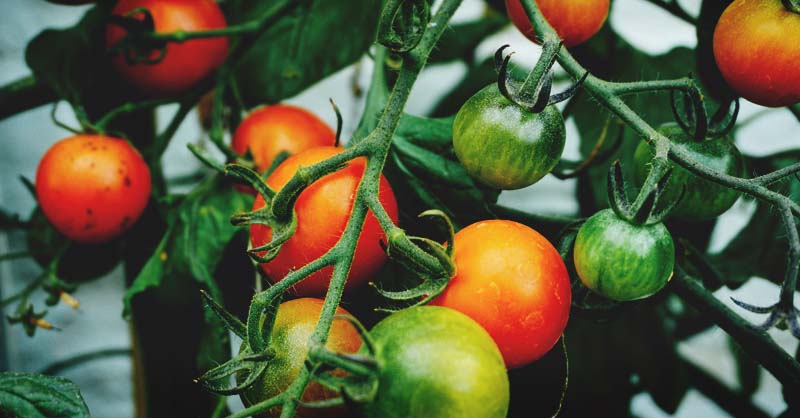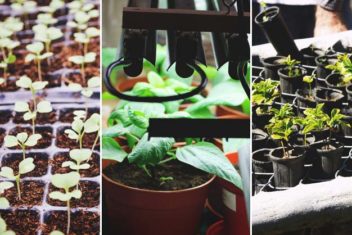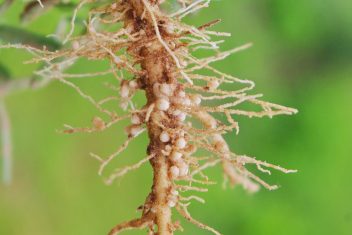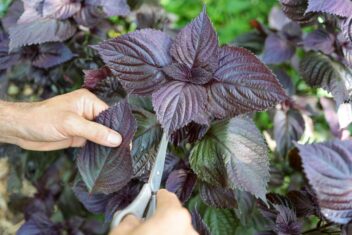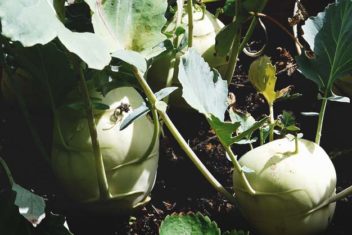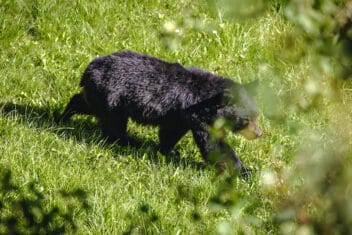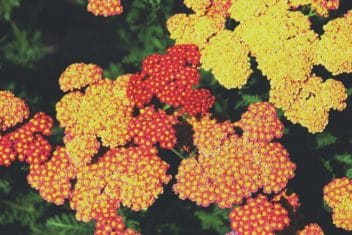Who doesn’t want to grow the perfect tomato? After all, tomatoes are the quintessential summer food that we’re all eager to get on our tables. Unfortunately, tomato pests are equally as excited to eat the delicious fruits.
Tomatoes are one of the most popular garden crops. My friends and family have an ongoing contest to see who can get them to the table first. Not only does this mean I need to get an early start, but I have to make sure my tomatoes are growing pest free.
Knowing what type of tomato pest is attacking your garden is the first step to tackling the problem. This guide will help you figure out what’s pestering your plants and give you a few methods for getting the situation under control.

Common Insect Pests That Affect Tomatoes
Aphids
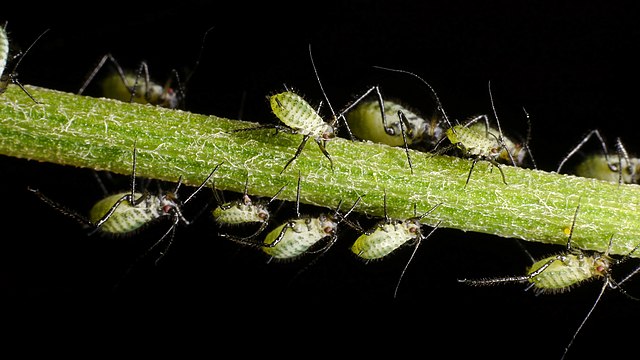
At some point, every gardener encounters aphids. The tiny, green, pear-shaped bugs leave a sticky honeydew secretion behind them. They’re notorious sapsuckers of not only tomatoes but many other vegetables. A few aphids aren’t a problem, but when you start seeing clusters of them, it’s time to take action. An infestation will interfere with nutrients and water flowing up to your tomatoes leaves.
Fortunately, getting rid of aphids is not hard. They have soft bodies and no way to protect themselves. You can squish them with your thumb like a demi-God if you need an ego boost. Or you can take a more traditional route. Several OMRI and NOP sprays kill aphids. However, they’re mostly soap and fats, something you can mix up yourself at home on the cheap.
Ame’s Homemade Bug Spray
Here’s the mixture that I use. The mineral oil suffocates the aphids while the dish detergent dehydrates them. The peppermint oil acts as a natural repellent.
- Two cups of water
- Two tablespoons of food grade mineral oil
- Three drops of dish detergent
- Three drops of peppermint oil
Mix the ingredients in a spray bottle and apply to your plants. Shake the mixture frequently while applying because the oil will separate.
Natural Aphid Controls
Do you want Mother Nature to assist you with killing those aphids? Then encourage lady beetles. Lady beetles (or ladybugs) eat aphids when they are in the larvae stage. You can attract ladybugs to your garden by planting dill, chives, cosmos, marigolds, and yarrow. They also need places like trees and shrubs to hide from predators.
Flea Beetles
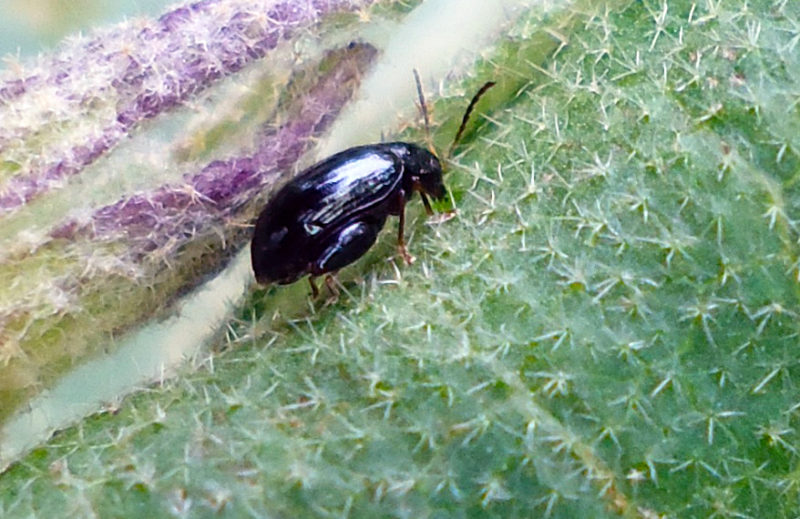
Flea beetles are tiny black insects with a hard exoskeleton. They can jump (hence the name flea beetle) and spread through your garden rapidly.
Flea beetles are my kryptonite! I’m convinced they spend all winter daydreaming of sucking the life out of my plants. They especially love to eat tomatoes and their cousins, eggplant and pepper.
You can identify flea beetle damage by the irregularly shaped pits and holes in the leaves of your tomatoes. Extensive damage makes the plant’s leaves look like lace. It sounds pretty, but it can destroy your plant.
Flea beetles lay eggs in the soil. The larva live underground and eat the plant’s roots. They typically don’t cause serious damage at this stage. As adults, they move above ground and eat the plant’s leaves. This stage is when they can cause monumental destruction.
Controlling Flea Beetles
You can help prevent flea beetles from attacking seedlings by using row covers when you transplant. Make sure to secure the row cover at ground level.
Sticky traps are an excellent way to control adults. I’ve seen diatomaceous earth (DE) recommended for flea beetles, but my experience is that it’s not effective. DE works best on soft-bodied pests. Diatomaceous earth consists of aquatic fossils. These ground-up organisms feel like flour in your hand. However, the microscopic jagged edges are lethal knives to soft-bodies critters. You can also t
Flea beetles are attracted to radishes, which you can plant as a trap crop and then use traps or an insecticide to kill the tomato pests.
Root Knot Nematodes
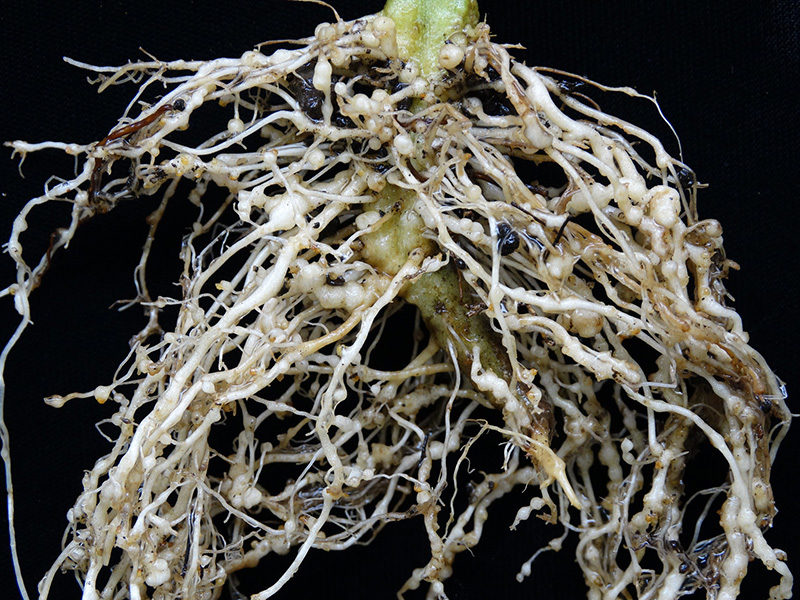
There are thousands of varieties of nematodes, but the ones that mutilat your tomatoes are root-knot nematodes. These microscopic roundworms cause bumps or galls on the roots of your plants.
These galls interfere with the plant’s ability to take up nutrients. They may cause the plant to stop growing and turn yellow from lack of nutrients. Nematodes are widespread, but they’re more common in the south and coastal areas with warm winters.
Prevention of Nematodes
The best prevention is a strict crop rotation system. Nematodes can’t travel far, so removing hosts plants lowers the population. Leave three years between planting tomatoes in one spot.
Your grandmother, like mine, may have told you to plant marigolds with your tomatoes. That’s because marigolds act as a trap crop to attract nematodes. Research shows that the French types such as lemon drop, yellow boy, and tangerine are the most effective.
You can also purchase tomato varieties that are resistant to nematodes. When looking in catalogs, you may see VFN after a tomato variety. The N stands for nematode and means that type will be resistant.
Prevention of nematodes starts in the fall, so be sure to take steps to stop them from becoming a problem.
Whitefly
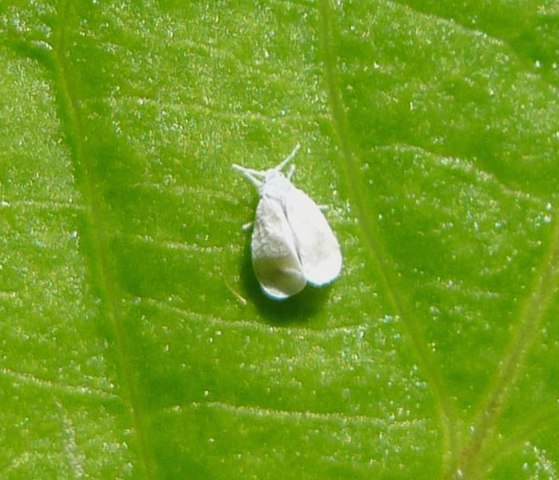
Whiteflies are small flying insects. They feed on the sap of your plants much the way aphids do. Whiteflies spread many types of fungal diseases among your plants.
The nymphs look like small white pods and hang out on the underside of the leaves. Adults are yellow colored insects with white wings. Whiteflies tend to be a greater problem in greenhouse production of tomatoes because they love a warm, moist environment.
Preventing Whiteflies
The best prevention for whitefly is weeding. Whiteflies breed and lay eggs in decaying plant matter.
You can also try silver colored mulch. Research shows that silver mulch confuses whiteflies so that they don’t
Finally, try an insecticidal soap such as Safer, or Ames Homemade recipe above.
Tomato Hornworm
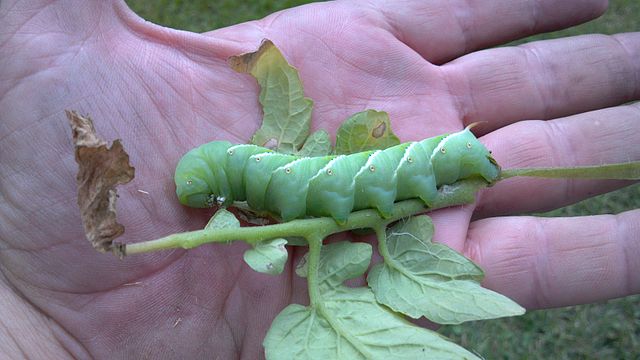
The tomato hornworm strikes fear in even the bravest of gardeners. The larvae are large, typically three to four inches long, with a black “horn” on their butt. These caterpillars will undergo metamorphosis into the Carolina sphinx moth, also known as the tobacco hawk moth.
The brown pupae overwinter and emerge as adults in the spring. The adults mate and lay eggs which hatch into caterpillars. They produce two generations each growing season, so you need to keep on top of things if these show up in
Natural Hornworm Control
The best control is hand picking these tomato pests off your plants. You can dispose of them in a bucket of soapy water. Better yet, feed them to your poultry for a treat.
Enlist your children in the task. When I was a kid, my father paid us a penny for each hornworm we nabbed. You can also recruit your poultry flock. Chickens have sharp eyes and are willing participants. You will have to keep an eye on them so that they don’t eat the tomatoes, though. Ducks are an efficient caterpillar control as well.
Sprinkle DE on the ground around your young plants when you transplant them. As they grow, sprinkle the leaves to protect them.
Be sure to till your garden in the fall. Tilling
If your infestation is severe, you can use commercial organic products. Both Safer Garden Dust and Monterey Insect Spray will kill the young caterpillars.
Colorado Potato Beetle (CPB)
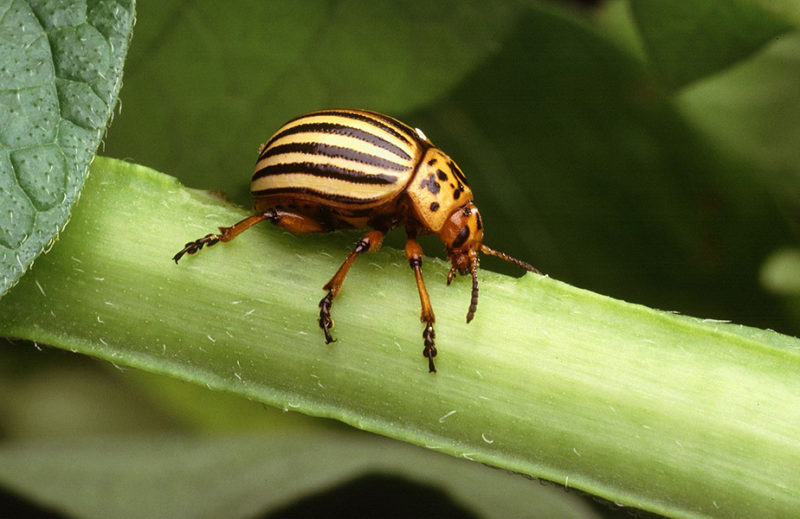
The Colorado Potato Beetle doesn’t only live in Colorado, and they munch on more than potatoes. They also love tomatoes and plants in the Solanaceae family. It’s one of the most destructive tomato pests out there.
The adults emerge in spring and lay clusters of orange eggs on the underside of plants. The eggs can survive for several years. Larvae will hatch dependent on weather conditions.
The Colorado Potato Beetle starts its life as a caterpillar-like larva. They are a dark red with black spots and gradually become a lighter red color. The adults are orange colored and oval shaped. They have a hard exoskeleton which protects them.
Both the larvae and adults can quickly defoliate your plants. Adults can fly and move around your garden.
How To Protect Your Tomatoes From Colorado Potatoes Beetles
Handpick CPB and d
For organic controls, azadirachtin (neem oil) and spinosad (Monterey Insect Spray) both help control populations. Neither of these will outright kill the adult CPB as their hard shell protects them, but they can destroy the larva.
Tomato Fruitworm
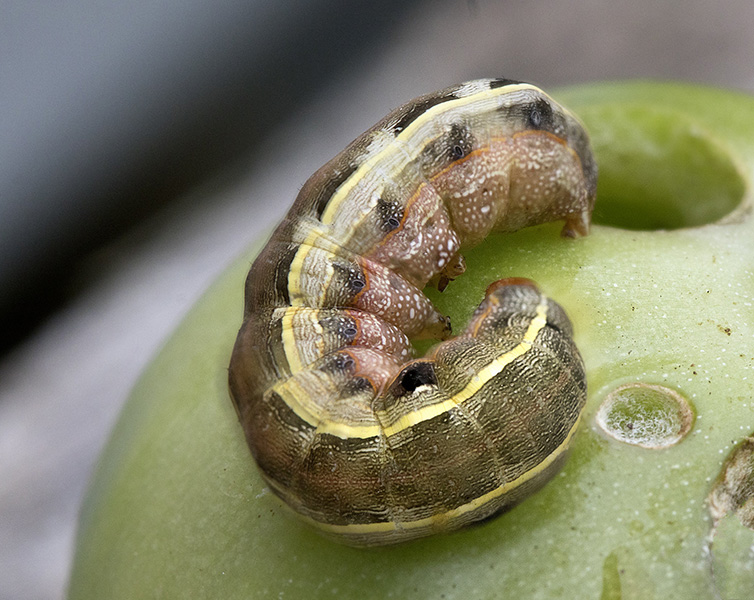
Tomato fruitworm, also known as corn earworm and cotton bollworm, usually first shows up at as a black hole at the base of tomato fruits. Once you cut into the tomato, you’ll see tunnels throughout the fruit. The larvae have tan heads and striped bodies. As adult moths, they are olive in color with a dark spot and bands on their wings.
Getting Rid of Tomato Fruitworm
Dispose of any infested fruit and avoid planting near corn because having two food sources can be an even more enticing lure for tomato fruitworm. Parasitic wasps can help control populations, and you can also sprinkle plants with diatomaceous earth. If all else fails, you may need to turn to chemical pesticides.
Cutworms
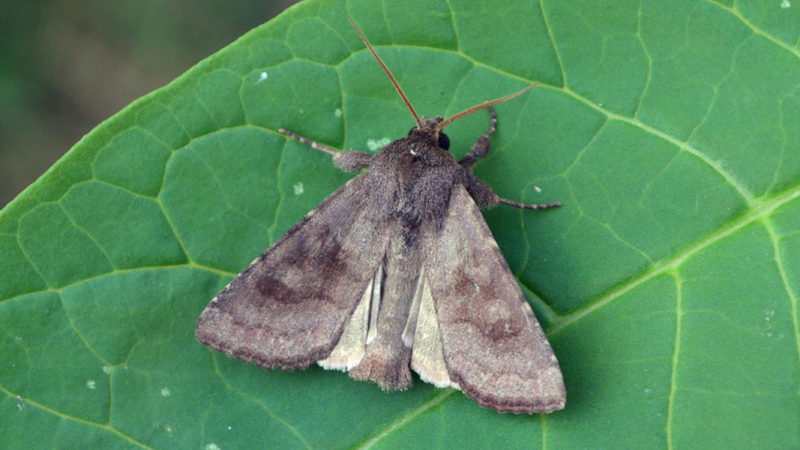
Cutworms are large gray or brown caterpillars with black or yellow spots. As adults, they are mottled brown or gray moths. If you notice large holes in your tomatoes, cutworms could be the culprit. Cutworms have smooth skin and reach about 2-inches at their full size. They are easiest to spot at night when they are active. During the day, they like to hide in soil or under debris around plants.
These aggressive tomato pests can mow down an entire garden overnight, so if you have them, get serious about control.
Stopping Cutworms
Keep the area around your plants clean and till the soil before planting. You can also place cardboard collars around your plants to prevent the worms from being able to nibble. Diatomaceous earth is effective against them, and you can head out to your garden in the evening with a flashlight to spot and destroy them. Moth traps are effective for catching the adults.
To prevent them from taking hold, be sure to rotate your crops and till the soil in the fall.
Green and Brown Stink Bugs
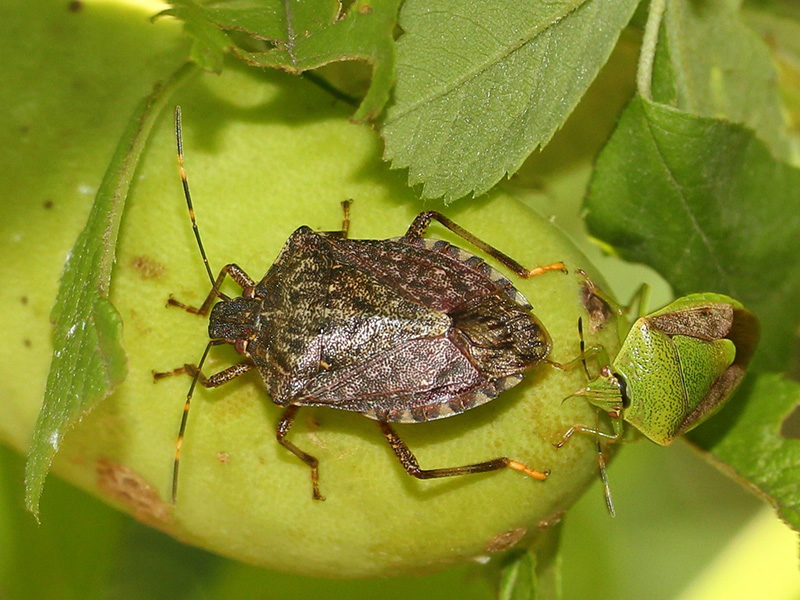
There are several different kinds of bugs that attack tomatoes, but the damage they do and the method of controlling them are similar. Stink bugs are about 1/2-inch long and have a distinct shield-shaped body and are usually brown or green. They emerge in the garden in the spring. If you don’t spot the critters first, you’ll notice pinpricks on your tomatoes surrounded by lighter colored areas that eventually turn yellow. They can carry diseases, including mold, that can destroy your garden. If you suspect you have an infestation, shake your tomato plant and examine the ground for the bugs.
Controlling Stink Bugs
To get a handle on these tomato pests, remove the weeds that stink bugs prefer to hide or overwinter in, like thistle, bramble, mustards, and mallow. Spray plants with water every day to knock them off your tomatoes and then hand pick them off the ground. If all else fails, try treating plants with kaolin. Try not to use commercial insecticides because they can kill the beneficial insects that will help keep your garden healthy.
Spider Mites
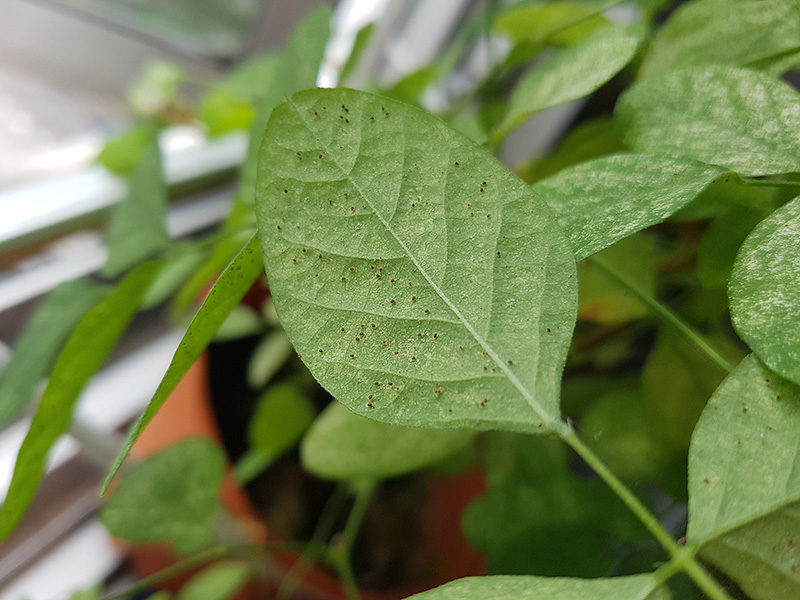
Spider mites are teeny-tiny arachnids that suck the life out of plants. Although they are small, a heavy infestation can wreak havoc on your garden. You’ll probably first see their delicate webbing all over your tomato plants. If you look on the underside of leaves, you’ll spot clusters of them hanging out. They can cause leaves to turn yellow and fall off. This can reduce yields.
Getting Rid of Spider Mites
Prune off heavily infested leaves and then spray the plant with a strong stream of water. Treat tomato plants with neem oil every 3 days to destroy the eggs. You can also use insecticidal soap if things are bad.
To help prevent them from returning, make sure your tomatoes get ample water and fertilizer because healthy plants can better fight off these pests. You also want to encourage beneficial insects to hang out in your garden, because they love to snack on aphids.
Tortoise Beetle
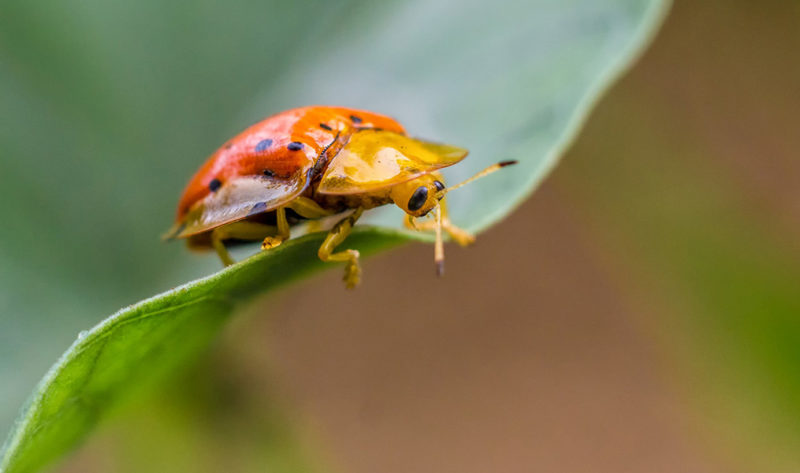
Tortoise beetles like to nibble on the underside of tomato leaves. They can kill off seedlings, and a massive infestation can reduce yields by filling with tiny holes. The beetles are pretty distinct at about 1/4-inch long with a round or oval body that looks similar to a ladybug at first. The difference is that a tortoise beetle shell extends over its head. They come in all colors, from red and orange to metallic green and blue.
Controlling the Tortoise Beetle
Handpick beetles if you spot them on your plants and drop them into soapy water. Then, scour your plants weekly for the clusters of eggs that the females lay. Scrape them off or snip off the host leaf. If things are still bad, use insecticidal soap to spray plants. Keep tomato plants well watered and fed, because healthy plants can fight off a small infestation.
Slugs and Snails
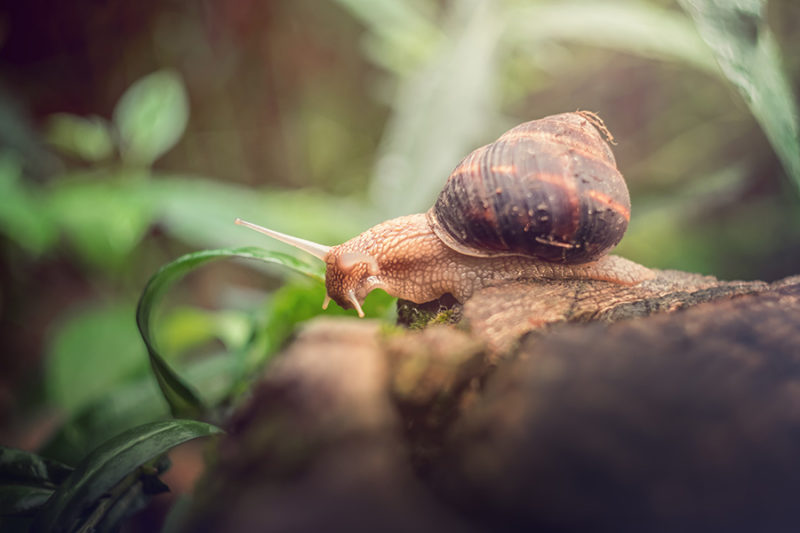
Slugs will eat just about anything in the garden and tomatoes are no exception. You probably know what a slug looks like, but if you don’t catch them in the act, you’ll know you have them if you see a hole nibbled into the fruit with surface feeding around the hole.
Control Slugs in your Tomato Garden
Dematiaceous earth is an effective first-line defense against slugs. Sprinkle it around your plants. You can also put lava rock around plants.
Adjusting your watering schedule can do wonders. Water in the morning, so the soil is dry by the evening, which is when moisture-loving slugs are most active.
If you want to tackle your slug problem aggressively, head outside at night with a flashlight and some salt. Sprinkle every slug you see with some salt. Be cautious not to use too much, or you can harm your plants. You can also try commercial slug repellants.
Tarnished Plant Bug
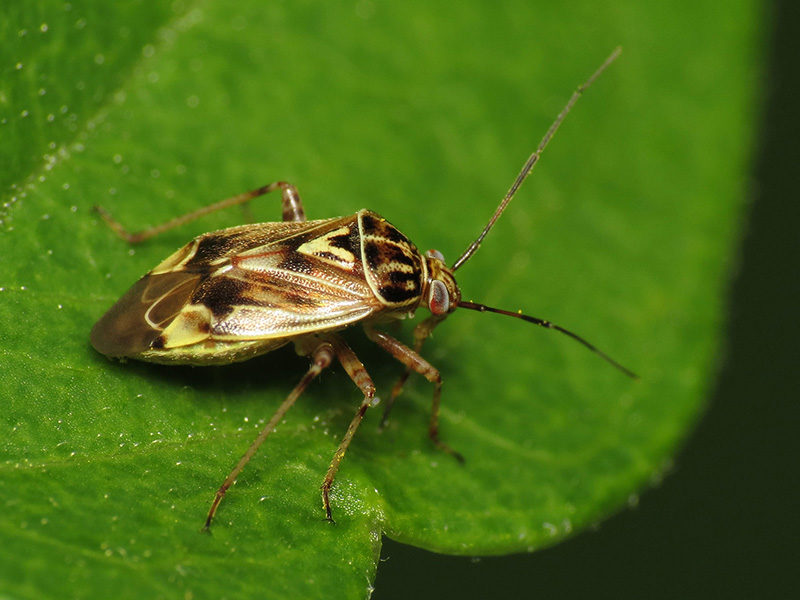
The tarnished plant bug is a small insect – about 1/4-inch big. It’s mottled yellow and brown, with a black tip on each wing. These tomato pests suck the juice from plant stems, leaves and fruits. You’ll often first know you have them when you see black spots all over your plant. They’ll also cause
Control Tarnished Plant Bug
There are five generations of this bug each year, so you need to keep on top of things. Your first line of defense is to keep weeds like mustard, pigweed, mullein, and ragweed away from your garden. Then, be sure to till your garden before planting.
Use floating row covers and white sticky traps around your garden at 2-feet above the ground. Make sure the covers are sealed at the soil level. Spray plants with a garlic spray while the bugs are active. You also want to encourage parasitic wasps.
Diagnosing Your Tomato Pests
Are you still stumped as to what’s killing your tomatoes? It’s well worth the time to spend studying some articles or websites to help you figure out which tomato pest is plaguing your plants. That way you can act quickly to nip it in the bud so to speak.
Online insect guides can be a great asset in your arsenal. You can look up your state and extension office to see what is available in your area. Here are a few resources based on location:
- For those on the west coast The Pacific Northwest Pest Management Handbook
- For the Northeast, the University of Maine has an extensive insect guide
- The deep south offers some unique challenges to bug control. University of Florida Extension has a guide to help.
The best way to protect your plants is to be an observant gardener. I like to take evening walks in my garden. I examine the plants and make notes of what needs weeding, spraying or harvesting. In this way, I keep up with my garden chores before things get out of hand.

